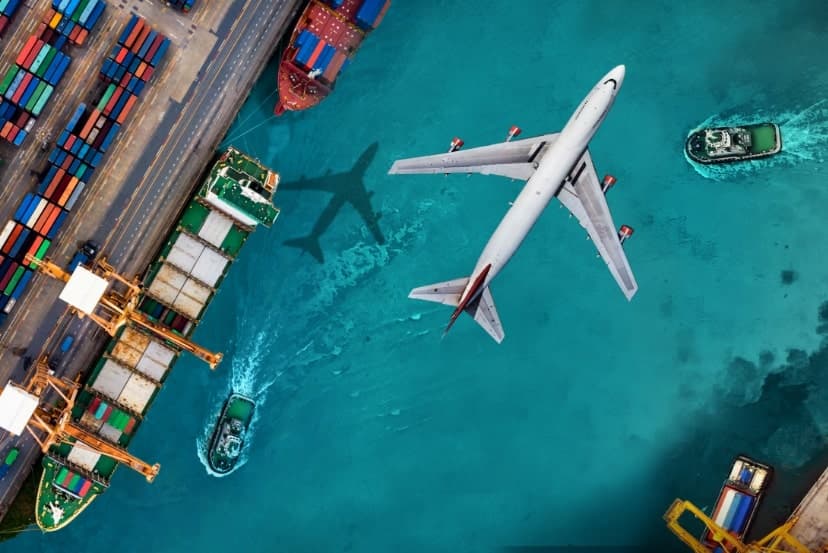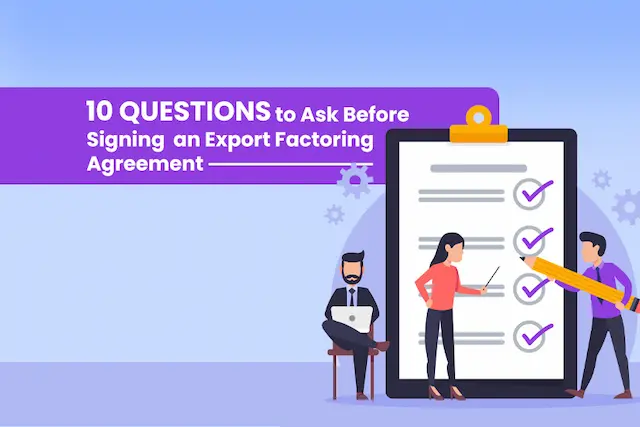In the process of exporting goods, beyond the essential customs clearance procedures, exporters play a crucial role in coordinating with the chosen carrier. This coordination encompasses the selection of services, such as Less than Container Load (LCL) or Full Container Load (FCL), tailored to the specific needs of the shipment.
Furthermore, exporters must adhere to various disclosure requirements when loading and dispatching goods. Special attention is given to specific disclosures, especially if the goods possess characteristics such as being hazardous, perishable, or requiring specific temperature conditions. As part of this collaborative effort, the chosen carrier actively engages with the exporter to confirm details related to the packing and labeling of the shipment. This ensures that both parties are aligned on the necessary precautions and specifications, contributing to a seamless and compliant loading process.
The comprehensive exploration of these steps sheds light on the multifaceted nature of the loading activity in international trade, emphasizing the importance of effective communication and collaboration between exporters and carriers.
Stepwise Guide on Loading for Export Goods

Here’s how the loading of export goods happens:
Checklist with Quantity Verification
The process of loading export goods begins with the meticulous preparation of a checklist detailing the quantity of items being presented to the customs officer. This document serves as a crucial reference point for both the exporter and the customs authorities, ensuring transparency and accuracy in the declaration of goods. The checklist not only facilitates a smooth inspection process but also acts as a comprehensive record for subsequent stages in the exportation journey.
Verification and Examination by Customs Officer
Upon presentation of the goods, a customs officer rigorously examines and verifies the contents of the consignment. This step is pivotal in preventing illegal exports, ensuring compliance with regulations, and confirming that the declared information aligns with the actual contents of the shipment. The customs officer may use various tools and techniques, including physical inspection, scanning, or documentation review, to ascertain the accuracy of the goods declared for export.
Consignment Sample Verification
To validate the accuracy of the goods and conduct a visual inspection, samples from the consignment are drawn. This step provides an additional layer of scrutiny, allowing customs officials to physically examine representative samples, ensuring they match the declared specifications. It serves as a precautionary measure to identify any discrepancies early in the loading process and facilitates a thorough assessment of the goods’ compliance with export regulations.
Container Loading Under Preventive Supervision
Once the verification process is complete, the loading of goods into containers commences under the preventive supervision of customs officers. This ensures that the entire loading operation adheres to prescribed regulations, preventing any unauthorized or illegal activities. The customs officers oversee the correct placement of goods within the containers, further ensuring that the loading process is in line with the documented details provided by the exporter.
Customs Officer Stamps “Shipped on Board”
After the container is loaded, a customs preventive officer supervising the process affixes a crucial endorsement on the exporter’s shipping bill copy. This stamp, typically stating “shipped on board,” serves as official confirmation that the goods have been successfully loaded onto the vessel. It is a pivotal validation point for both the exporting entity and the customs authorities, signaling the completion of the loading phase and the readiness of the consignment for international transport.
Electronic Export General Manifest (EGM)
Simultaneously, the export department is provided with an electronic copy of the Export General Manifest (EGM) by the shipping line. This document comprehensively outlines the details of all cargo loaded onto the vessel, offering a consolidated overview for both regulatory and logistical purposes. The EGM plays a vital role in facilitating efficient coordination among various stakeholders involved in the export process, including customs, shipping lines, and the exporting entity.
Sealing and Marking of Cargo
To enhance security and facilitate easy identification, the sealed cargo is meticulously marked with proper descriptions and codifications. This step ensures that the containers are easily recognizable during subsequent stages of the export journey. The markings serve as a visual reference for customs officials, shipping personnel, and other stakeholders involved in the transportation chain, contributing to the smooth and secure movement of goods from the export location to the destination port.
Document Handover to Custodian
With the cargo properly sealed and marked, the package containing essential documents such as shipping bills, bills of lading, and invoices is handed over to the custodian. This custodian, often a designated entity responsible for the secure storage and transportation of goods, receives the documentation essential for further processing and handling of the consignment. This transfer of documents is a critical step in ensuring that all necessary paperwork accompanies the cargo throughout its journey.
Consolidation of Cargo at Gateway Port
Subsequently, the containers are transported to the gateway port, where the custodian consolidates the cargo. This involves arranging and organizing the containers in a manner that optimizes efficiency in subsequent processes. The consolidation step ensures that the containers are ready for the next stage of their journey and aligns with the logistical requirements of the shipping line and other transportation entities involved in the export process.
Container Opening and Re-stuffing
Upon reaching the gateway port, the containers undergo an inspection and re-stuffing process in the presence of customs officials. This step is crucial for ensuring that the cargo remains intact and in compliance with regulations during transit. The shipping line, responsible for the physical handling of containers, opens them to verify the contents, reorganize if necessary, and make any adjustments required for safe and secure transport to the final destination.
Marking Container Number on Documents
To maintain traceability and accountability, the container number is marked on transference copies of the shipping bill and AR-4 (a customs form). This marking links the physical container to its corresponding documentation, streamlining record-keeping and facilitating efficient tracking throughout the export process. It serves as a reference point for customs authorities, shipping lines, and other stakeholders, ensuring that the correct container is associated with its respective paperwork as it progresses through various stages of the international supply chain.
What Can Go Wrong While Loading Export Goods?
Overcoming these challenges mentioned below necessitates a proactive approach, continuous learning, and strategic partnerships to navigate the intricacies of the shipping landscape successfully.
Inaccurate or Incomplete Document Filing
One of the foremost challenges lies in the potential for filing documents with incorrect or incomplete information. This can lead to delays, regulatory issues, and disruptions in the overall shipping flow.
Lack of Comprehensive Knowledge
Importers and exporters may face difficulties stemming from a lack of understanding regarding crucial aspects such as exchange rates, packaging and marking regulations, and restrictions applicable to specific products. Inadequate knowledge in these areas can result in compliance issues and hinder the smooth progression of shipments.
Failure to Verify Supplier or Customer Reputation
A significant obstacle is the failure to conduct thorough due diligence on the reputation of a supplier (exporter) or customer (importer). This oversight can lead to potential risks, including unreliable transactions, quality concerns, and financial implications.
Ambiguity Regarding Payments
Ambiguity surrounding payment processes and the absence of clear strategies to secure them pose substantial challenges. Uncertainties in payment terms can create financial vulnerabilities and strain the business relationship between parties involved in the transaction.
Lack of Positive Relations with Customs Authorities
Establishing and maintaining positive relationships with customs authorities is critical. Failing to do so can result in bureaucratic hurdles, increased scrutiny, and delays in the clearance of goods.
Inadequate Selection of Intermediaries
The absence of suitable intermediaries, such as freight forwarders and customs house agents, who possess the expertise to facilitate a smooth transaction, can impede the shipping process. Selecting the right intermediaries is essential for efficient logistics management.
Over Reliance on Middlemen
Blind dependence on middlemen or intermediaries without due diligence poses a significant risk. Relying solely on intermediaries without an understanding of their capabilities and reliability can lead to miscommunication, inefficiencies, and potential complications in the shipping process.
Final Words
In conclusion, loading export goods involves a detailed process requiring careful coordination between exporters and carriers. From checklist preparation to container sealing, each step plays a crucial role in ensuring a smooth international trade journey. Challenges such as document inaccuracies, lack of knowledge, and reliance on middlemen can be overcome with proactive measures and continuous learning.
By understanding these complexities and fostering positive relationships with customs authorities and intermediaries, exporters can navigate the shipping landscape successfully. Ultimately, a well-executed loading process, coupled with strategic partnerships, contributes to the reliability and efficiency of global trade transactions.
Also Read : What Exporters Need to Know About Post-Shipment Credit





